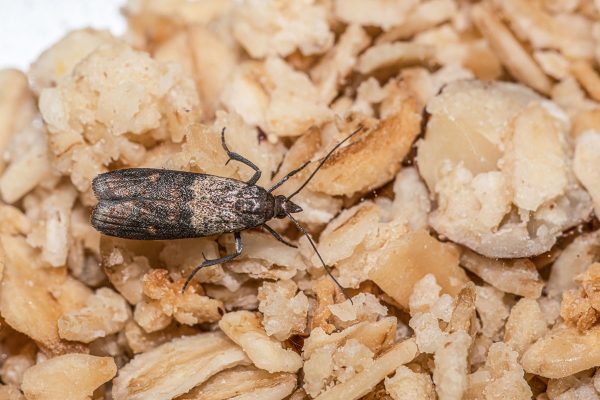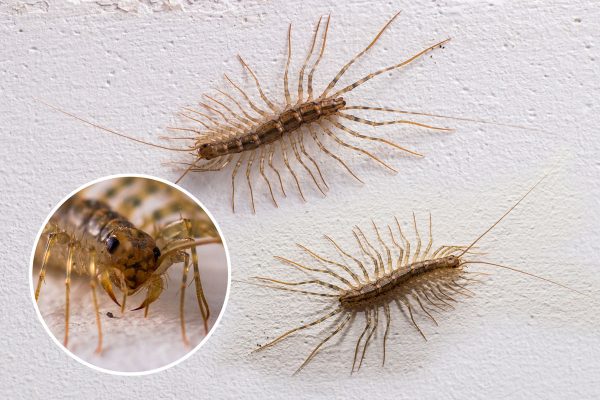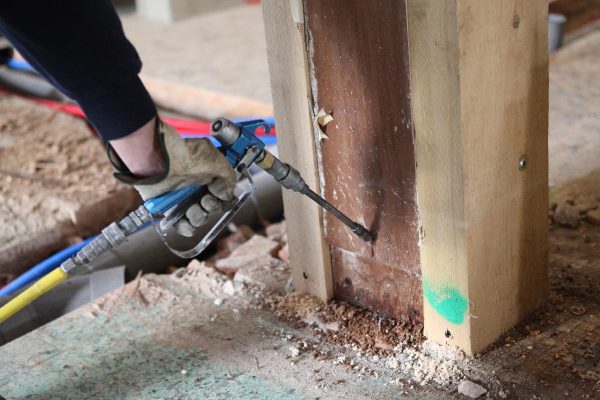Carpenter bees are helpful for the ecosystem, but you don't want them anywhere near your home. They are known to cause structural damage, which may weaken your house's security. So, can you tell when they happen to be inside your walls? Can you hear them chewing, alerting you of your presence? We have researched answers to find out.
You can hear when carpenter bees are chewing in your wall voids. They usually have a buzzing sound, and you can feel them vibrating if you place your hands on the wall. The reason for the buzzing is they are carving out holes within the walls where they can nest.
There are many ways you can handle a carpenter bee infestation in your home. These ways are safer, non-invasive, and better for the environment. Carpenter bees also have an interesting lifecycle that can help you plan better to prevent bees from nesting in your walls. If you are interested to learn more, keep reading below.
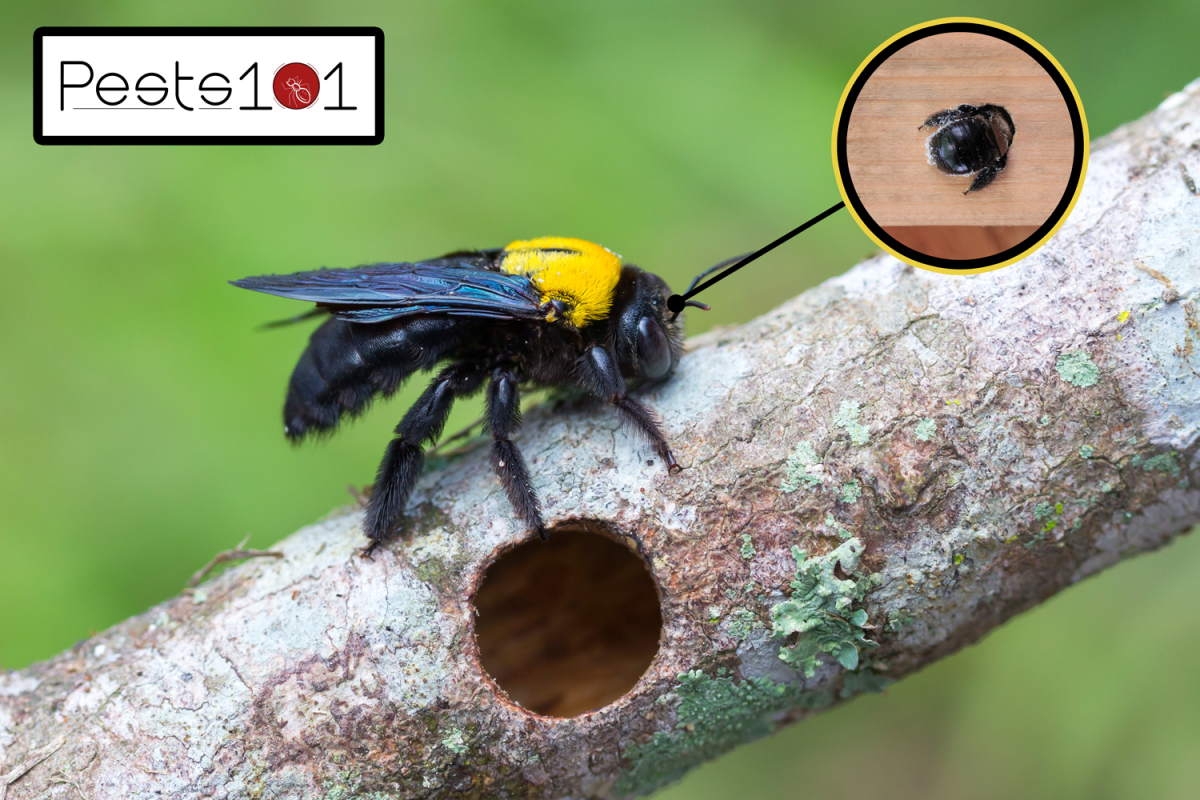
What are carpenter bees?
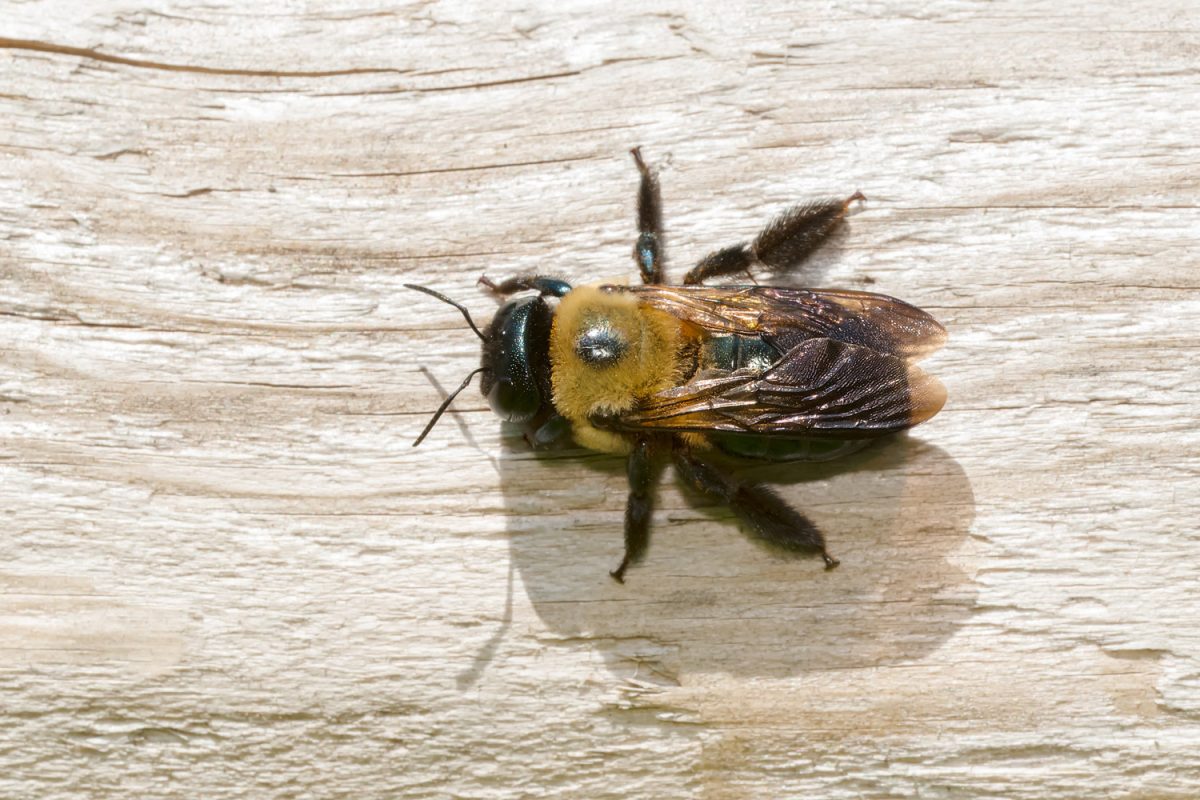
Carpenter bees resemble bumblebees, except they do not usually come in colonies. They are a solitary subspecies of bees, and they like to nest in excavated wood--which is where their name comes from.
They drill holes into the wall where they create their nest, and their offspring will be placed into the hollowed parts.
Carpenter bees can be destructive, but they are an essential part of the ecosystem. They don't harm humans for no reason, although you still need to be careful when handling them since they can sense threats and attack you.
You can identify carpenter bees by their shiny and hairless abdomen, unlike bumblebees who have hairy abdomens with black and yellow stripes. People often confuse the two, except carpenter bees only have yellow color on their abdomen instead of stripes all over their body.
You can also identify them by their size since carpenter bees are known to be the largest bees in North America. This means they are better at withstanding harsh weather conditions, allowing them to pollinate which normal, smaller bees won't be able to do.
Since carpenter bees easily repel predators by their sheer size, they rarely use their sting. For this reason, female carpenter bees are much more docile than other bee species and only sting when they are physically threatened.
Male species are in charge of protecting their territory and chasing away possible intruders. However, these male carpenter bees only intimidate predators since they don't have stingers.
How To Safely Repel Carpenter Bees
Although carpenter bees can be destructive, we still need to practice caution when repelling them and try not to kill them as much as possible. Carpenter bees are solitary, so you won't have to deal with large numbers of them most of the time, and are fairly easy to remove from your house.
Here are non-invasive methods you can apply to get rid of these helpful insects.
Get A Carpenter Bee Trap
First, you can try building or purchasing a carpenter bee trap. They are widely available and are easy to make. See instructions below.
- Cut a 4x4 piece of lumber.
- Drill your central hole with a 1/2-inch drill bit. This will be a passageway for the bees, so drill it all the way through the wood.
- Drill three-mole holes on the side so the bees can have multiple entryways. Let the angles lead to the center hole so they all connect.
- Drill the bottom hole with a 1/2-inch drill bit.
- Hammer a staple on top of the block for hanging.
- Cut out 6 inches of the wood plank to act as the roof of the trap. Nail it on top of the lumber.
- Get an empty water bottle and drill a hole 1/2-inch hole through the lid, along with small breathing holes at the bottom of the plastic bottle.
- Test fit the lid, then secure it with superglue at the bottom hole. The water bottle will act as a trap for the carpenter bees.
- Once the carpenter bees are in the bottle, slowly release the bees from the plastic bottle. Make sure to practice caution and wear protective clothing when you do this.
Spray Them With Citrus Oil
Citrus oil is another safe way to get rid of carpenter bees on your property. It won't kill the bees, but the smell would be offensive to them that they would have no choice but to leave the perimeter.
Play Loud Music
Inform your neighbor beforehand and play loud music to disrupt the carpenter bees. The vibration from the speakers will irritate them, and they should be clearing the area within 2-3 days.
Mix Essential Oils
Mix lavender, tea tree, and citronella oil in a spray bottle and spritz it where the carpenter bees are nesting. Not only will this be safer for the bees, but it will also give your home a pleasant smell.
This mixture will effectively repel carpenter bees since they don't like any citrus smell.
How To Prevent Carpenter Bee Infestations
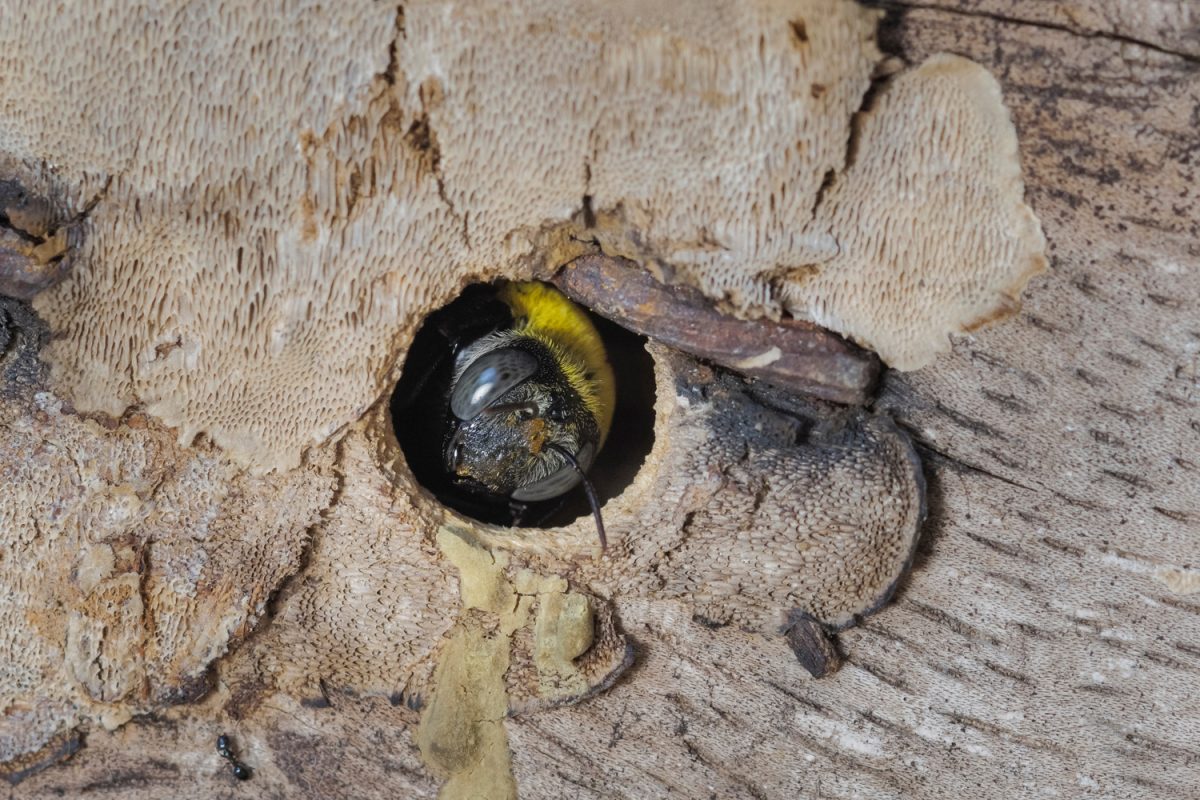
As with any pest-related concerns, prevention is better than cure. Here are ingenious ways to protect your home from a carpenter bee infestation.
Choose Hardwood
If you live in an area where carpenter bees are prevalent, use hardwood for your exterior construction as much as possible. Carpenter bees are attracted to softwoods such as cypress, pine, and cedar since they are easier to carve. Carpenter bees avoid hardwood, so building a house with it is a smart move.
Treat Your Wood
If your house is predominantly made of wood, don't leave it untreated. Not only will it shorten your wood's lifespan, but it will also attract carpenter bees.
These bees tend to nest on unpainted and untreated wood, so make sure your wood is stained and sealed so bees won't be able to penetrate your home.
Keep Them In A Controlled Environment
If you own a garden, this may be beneficial for you and the bees. Assign a place for the carpenter bees such as blocks of wood near your garden where they can create their nests. That way, they'll keep to themselves, not invade your house, and pollinate your garden instead.
Carpenter Bees Vs. Bumblebees: Distinction
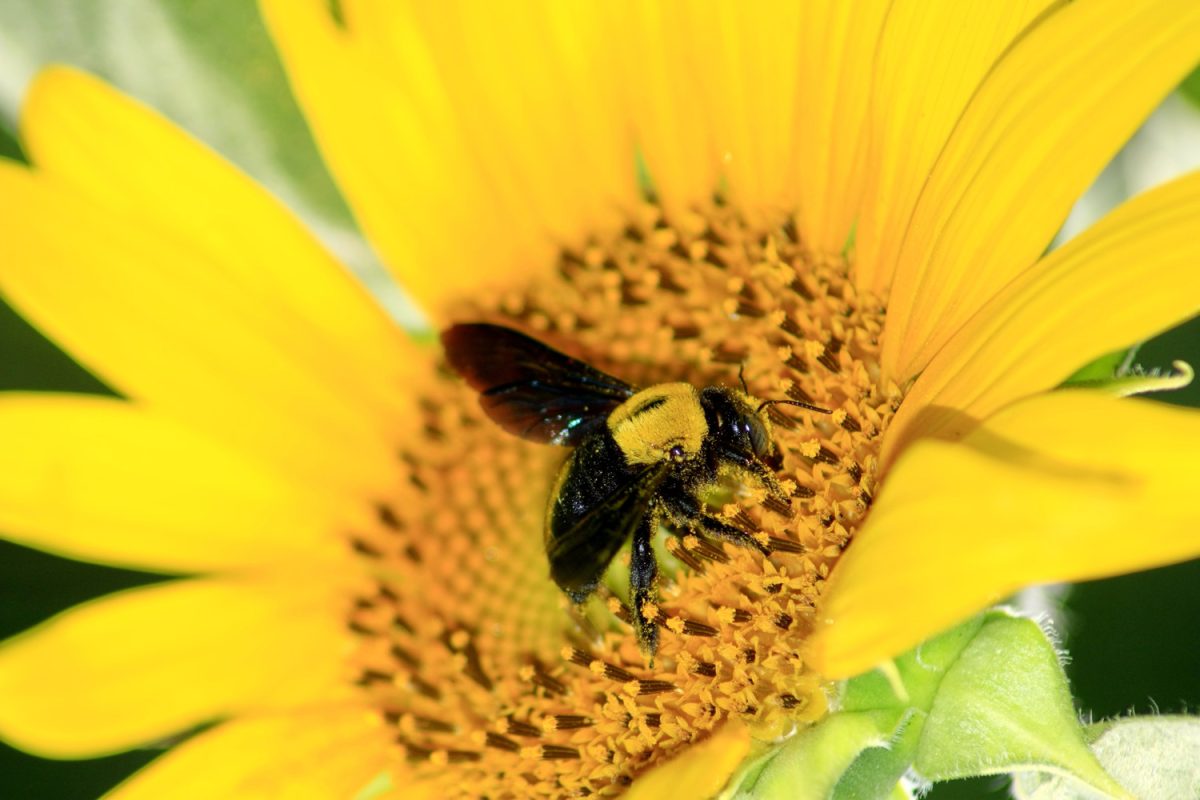
People often confuse bumblebees and carpenter bees because they both have a yellow part in their bodies. However, they have differences not only physically, but also behaviorally.
Physical Differences

Carpenter bees have a shiny, black abdomen without any yellow stripes. They measure about 1-inch long, and they have a pale yellow thorax which is what makes them resemble a bumblebee.
A bumblebee's body is hairy and fuzzy. They have bright yellow stripes and are generally smaller than carpenter bees, with the bumblebee's body ranging from 3/4-inch to 1/2-inch overall.
Behavioral Differences
Carpenter bees are solitary and do not have colonies or hierarchies. The nests are constructed by female bees who lay their eggs on the carved cells.
Bumblebees, just like most bees, live in a colony comprising of up to 400 bees, each one belonging to a hierarchy. Bumblebees serve their queen and work for their colony.
Signs of Carpenter Bee Infestation
A carpenter bee infestation can be subtle since they don't come in large colonies. However, there are signs when you can tell there may be an infestation. Here are obvious signs you are most likely harboring carpenter bees in your home.
You Hear Buzzing
Don't write off the buzzing sound as just something your ear is making up. Often, this is an indication that a carpenter bee is chewing on your wall crevices, which needs to be addressed immediately before they cause structural damage.
You Spot Sawdust
Fine dust from wood will be released when bees chew on them. You may find these specks of dust piled or scattered around your floor. The dust can also cling to windows, doors, and other surfaces the dust may fall on. Follow the trail of dust since this is most likely the length of their tunnel.
You Spot Round Holes
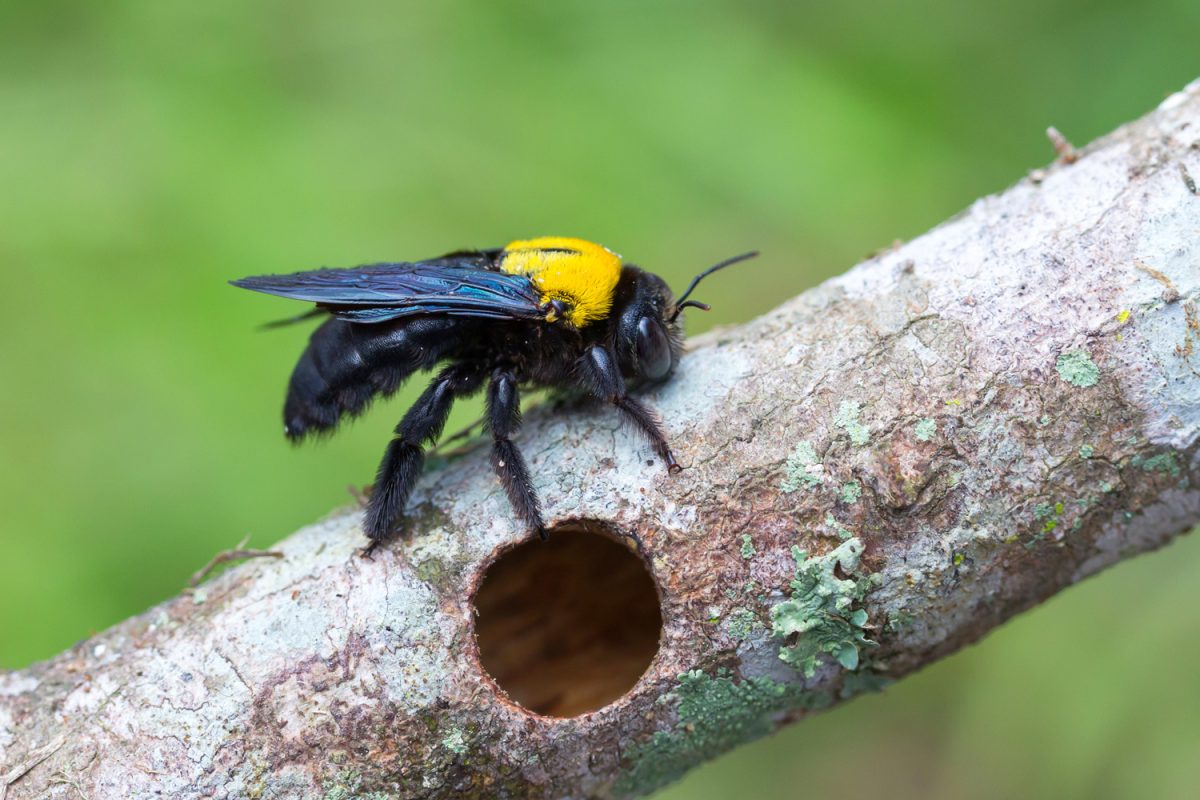
If you spot round holes on your walls, floors, or crevices, this is an indication that the carpenter bees are starting to cause structural damage. Female bees usually drill their egg-laying holes underneath floorboards and then follow the grain of the wood to create a tunnel.
Call pest control services immediately to have this addressed since they can completely invade your house if they aren't driven out.
Final Thoughts
Carpenter bees cause damage, but they are a necessary evil to keep ecosystems intact. The best we can do is to manage them so they stay in places they are necessary, or to simply build protective measures around our house to prevent an infestation.
If you want to learn more about critters that can invade the home, check out "How Long Do Black Ants Live?" or "Can Black Ants Damage Your House?"


